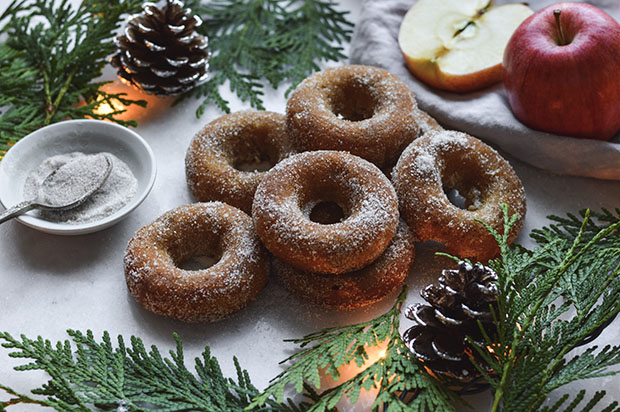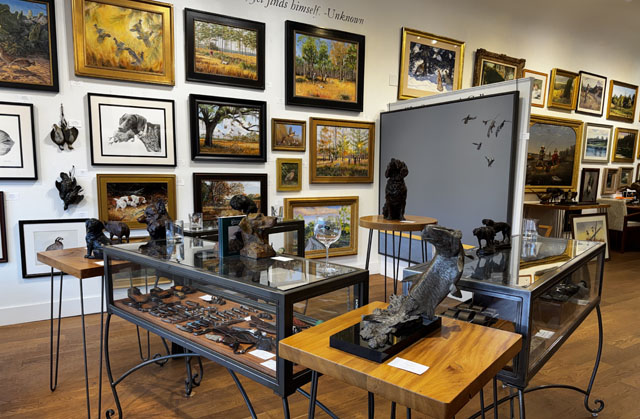Southern Flavor
08 Nov 2019
A delicious look at some uniquely Charleston holiday dishes
Story and photos by Suzannah Smith Miles

Those new to Charleston or those simply visiting the Lowcountry for the holidays, perhaps you’ll notice some unfamiliar dishes on the table.
For example, in Charleston, stuffing for the turkey can include salty, tasty oysters. Sometimes a “pie” is actually a casserole. And on New Year’s Day, while the rest of the country eats black-eyed peas for good luck, Lowcountry plates are piled high with a dish known as Hoppin’ John.
Have you ever wondered how these dishes ended up on the table? There is a considerable amount of history behind them. Share a fact or two while you pass around the plate.
Oysters ‘R’ Us
Lowcountry creeks provide an abundant habitat for the Eastern Oyster (Crassostrea virginica). Filter feeders, these hardy bivalves ingest plankton and algae by continuously opening and closing their shells, flushing an astounding 50 gallons of water through their gills each day.
It’s an old wives’ tale that oysters should only to be eaten during months that contain the letter “r.” They are safe to eat year-round but since they breed during the summer, to protect the species today, oysters can only be harvested in cold weather months.
A love for these salty bivalves hearkens back to the early coastal Indians who ate oysters in great quantities, leaving behind the unusual circular shell features called shell rings. Not only are oysters delicious, they're as high in protein as a cut of beef. They have long been a staple at Thanksgiving and Christmas dinners, either served on the half-shell, deep fried, or mixed in with the cornbread stuffing for the turkey. The holidays also bring folks outdoors for the oyster roast, where friends gather around the fire to eat fresh steam-roasted oysters. One particular Charleston favorite is oyster pie, which is actually a casserole made with cream, cracker crumbs and fresh shucked oysters.
Charleston Oyster Pie
In Charleston, this “pie” is actually a casserole
1 quart fresh shucked raw oysters, carefully reserving liquid
2 cups saltine crackers, crumbled into small- to medium-size pieces
Half and Half (for a richer version use heavy cream)
1 stick melted butter
1 tsp. each, salt and pepper (or to taste)
Drain the oyster liquid into a measuring cup and add cream to bring to 2 cups. In a separate bowl, combine crushed saltines, salt, pepper and melted butter. Begin stacking the cracker mixture and oysters into a greased 2 qt. casserole dish in layers—crumbs first, oysters next, crumbs then oysters, etc. Finish by pouring the oyster-cream mixture over the top so it seeps throughout the casserole. Bake at 350 degrees for 20-30 minutes. Serves 6-8.
Open Sesame
Unique among Charleston confections are benne wafers, famed for their subtle favor and history. Benne (pronounced bennie) is a West African word for sesame. This tall, flowering annual (Sesamum indicum) was brought to Lowcountry shores by enslaved Africans beginning in the early 1700s and became an integral part of the Gullah-Geechie culture.
In Africa, the benne plant was thought to bring good luck and ward off evil, and Lowcountry Gullah people called benne the “good will” plant. Even today, benne wafers are said to bring good fortune to those who eat them.
Benne seeds are used in cooking similarly to the use of nuts. The true Charleston benne wafer is golden disc no larger than a silver dollar and steeped with the rich flavor of brown sugar, butter and roasted benne seeds.
Benne Wafers
2 cups brown sugar
1 cup plain flour
1/2 tsp. baking powder
1/4 tsp. salt
3/4 cup roasted benne seed (to roast benne seeds, put in heavy skillet on top of stove or on a baking sheet in oven until dark brown)
1 egg, beaten
1 stick butter
1 tsp. vanilla
Cream the butter and sugar by beating them together, add beaten egg, then mix in flour sifted with salt and baking powder. Add vanilla and benne seed. Drop by teaspoon (or less) on greased cookie sheet. Bake in oven, 325 degrees. They cook quickly (5-7 minutes depending on oven). Allow to cool one minute before removing with spatula. Makes about 100 wafers.
Pecan Perfection
The nutritious nutmeat of the pecan tree (Carya illinoinensis) forms a tasty basis for a number of traditional Charleston delicacies. Pecan trees are a native tree, a species of hickory, and can grow to over 150 feet high. Trees as old as 300 years still bear fruit.
Native Americans called them paccans, which roughly translates as, “nuts requiring a stone to crack.” By the late 19th century their meat had become a valuable commodity and Mount Pleasant’s Boone Hall Plantation was purported to be the largest pecan grove in the United States, if not the world.
The use of pecan meat is as wide as the culinary spectrum. In the Lowcountry, salted pecans, sugar-coated pecans and homemade pralines are favorite holiday hostess gifts. There is no preferred pronunciation of the word pecan—some say “pea-CAN” while others, “pea-KAHN.”
No matter how you say it, the sweet and buttery flavor of pecans make for tasty eating—either cracked straight from the shell or dished up in that classic Southern dessert called pecan pie. During the cocktail hour, a Charleston mainstay is a plate of home-made cheese biscuits, each topped with a pecan half pressed perfectly into the center.
Charleston Pecan Cheese Biscuits
¾ cup butter
1-½ c. grated sharp cheddar cheese
¼ c. grated Parmesan cheese
1-½ c. flour
1 tsp. salt, 1/8 tsp. cayenne pepper
Pecan halves
Cream butter and cheese by beating them together until smooth; add spices and flour until blended. Cool in refrigerator for at least an hour. Roll out onto a lightly-floured board and cut into rounds with a small (about 2”) biscuit cutter. Press pecan half on the top of each biscuit and bake at 350 degrees for 10-12 minutes. Makes about two dozen biscuits.
Hoppin’ John
This traditional New Year’s Day fare of peas and rice is said to bring good luck for the coming year and is usually accompanied by collard greens (said to bring you luck with money) and cornbread. Like much of Charleston’s gastronomic history, this dish has origins that hearken back to Africa and the Caribbean and one of the top culinary delights of the Gullah tradition. Gullah cooks have made Hoppin’ John for generations in the South Carolina Sea Islands and Lowcountry. While there are several versions of this recipe, depending on whose kitchen it is being prepared in, it is traditionally made with black-eyed peas or cowpeas, but any type of field pea is permissible.
Traditional Lowcountry Hoppin’ John
1 lb. dried black-eyed peas
1 cup rice, raw
8 slices of bacon cut in small strips, or 4 oz. salt pork
1 tsp. hot pepper sauce
1-½ cups chopped onion
2-½ quarts water
1-½ cups chopped onion
Garlic, salt, pepper and other herbs as desired.
Wash beans and soak in water overnight. Fry bacon over moderate heat until brown. Add onion and continue cooking until onion is tender. Add garlic, salt, pepper, hot sauce and herbs as desired. In large pan, combine soaked peas, water, bacon and onion mixture. Cover pan, bring to boil then simmer until beans are tender, about one hour. Stir in rice and cook over low heat 30-40 minutes or until rice is tender and fluffy. Spoon into large serving dish and serve with collard greens and cornbread.
Precious Citrus
The custom of putting fruit, like an orange or banana, in the Christmas stocking dates back to the time when tropical fruits were rarities, especially in winter.
A gift of oranges or fresh lemons was considered a luxury, a very special treat. At the top was the pineapple, a trophy fruit that was both a culinary and social sensation.
Since it was hard to procure and expensive, the colonial hostess who could afford to offer fresh pineapple at her table was making a statement that she was serving her guests the very best. It’s very presence bespoke affluence.
Whole pineapples as decorative objects soon topped sumptuous table displays. Ingenious merchants even “rented” pineapples out for the day to those wishing to impress their guests.
Later, these “previously used” pineapples were sold to those whose wealth allowed them to actually eat the fruit. Over the years, the pineapple came to represent a symbol of hospitality—and has become synonymous with Charleston itself.












